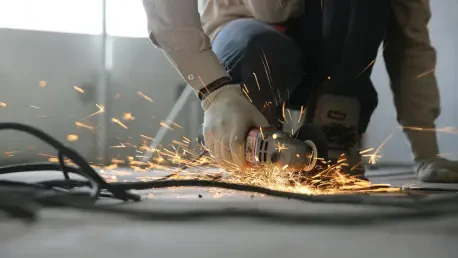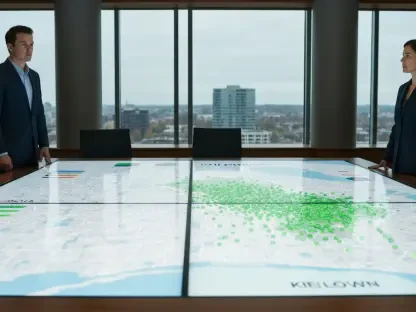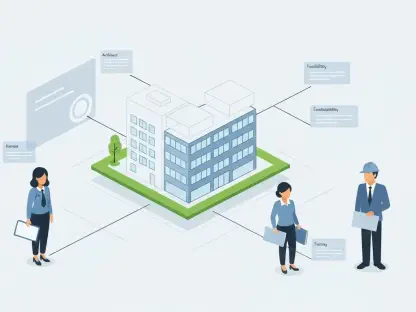The construction sector in Malta has faced significant challenges due to its rapid expansion, often leading to safety concerns and regulatory shortcomings. An alarming incident occurred recently in Paceville when a building collapsed after warnings about structural cracks went unheeded, highlighting the urgent need for modernization and technological intervention in the industry. As infrastructure projects proliferate across the islands, there is mounting pressure on existing regulatory frameworks to ensure safety while maintaining efficiency. The integration of advanced technologies like Artificial Intelligence (AI) is increasingly seen as a potential solution to enhance safety measures and address the inadequacies of current systems. AI offers the prospect of transforming how construction projects are monitored and managed by providing sophisticated tools for proactive risk assessment and regulatory compliance.
The Role of AI in Structural Monitoring and Safety Compliance
AI’s ability to revolutionize Malta’s construction sector primarily stems from its capacity to provide constant oversight and manage vast amounts of data in real time. AI technologies can analyze images and detect structural anomalies, offering a continuous monitoring system that alerts stakeholders to potential risks before they become critical. This proactive approach can significantly reduce the risk of accidents and ensure timely interventions to prevent disasters. Additionally, AI-equipped cameras and sensors could be deployed on construction sites to monitor safety compliance, thus identifying breaches immediately. This real-time response capability could prove invaluable in addressing safety issues as they arise, maintaining a safer working environment.
Furthermore, AI can complement limited human resources by automating routine processes, allowing for efficient allocation of manpower to more critical tasks. This technological integration ensures that safety checks and inspections are thorough and consistent, minimizing human error. By leveraging AI-driven systems, Malta could build a robust framework for construction safety that not only addresses current issues but also anticipates future challenges. This shift would mark a significant departure from traditional reactive measures, helping transition to a more preventive stance that prioritizes safety and compliance across all construction stages.
AI Enhancing Planning and Regulatory Processes
Integrating AI into the planning and regulatory stages of construction can provide a comprehensive overhaul, enabling authorities to flag issues at the outset. AI systems could revolutionize the planning phase by scrutinizing applications for missing documents, identifying developers with problematic histories, and predicting potential project risks early on. Such capabilities empower planning authorities with tools to prevent malpractices and ensure that only safe, compliant projects move forward. This enhances the overall efficacy of the regulatory process in Malta, addressing the inadequacies previously highlighted in several high-risk constructions.
Additionally, the incorporation of AI could lead to the development of an island-wide risk map, combining satellite imagery and historical data to target inspections in high-risk areas. This approach ensures that resources are optimally allocated to areas most in need of oversight based on empirical evidence. Systematically analyzing this data would provide authorities with actionable insights, potentially reducing the influence of political factors that often hinder effective regulation. Through AI-driven innovations, Malta could strengthen its planning domain, making it a cornerstone for safer urban development.
Moreover, by integrating AI with existing public feedback mechanisms, such as social media and hotlines, authorities could systematically evaluate and address civic complaints. This combined approach allows for the generation of a much more nuanced and comprehensive risk profile that manages both technical deficiencies and local concerns effectively. Utilizing AI for these efforts can ensure that regulatory bodies are not only equipped to handle today’s construction needs but also prepared to evolve alongside technological advancements.
The Road Ahead: Shifting Towards a Proactive Framework
AI’s potential to transform Malta’s construction industry is chiefly due to its capability to consistently oversee operations and manage vast data in real time. AI tools have the ability to analyze imagery and spot structural defects, establishing a system that continuously alerts stakeholders about risks before they become critical, reducing accident risks significantly and ensuring timely measures to avert disasters. AI-powered cameras and sensors can be implemented on sites to ensure safety compliance, swiftly identifying and responding to violations, and maintaining a safer job environment. This real-time response aspect in addressing safety issues as they emerge is invaluable.
Moreover, AI can ease the burden on limited human labor by automating repetitive tasks, allowing efficient manpower allocation to more crucial tasks. This integration ensures thorough and consistent safety inspections, minimizing human errors. By implementing AI-driven systems, Malta can forge a solid foundation for construction safety, tackling current issues and predicting future challenges, shifting from traditional reactive strategies to preventive safety and compliance measures throughout construction processes.









